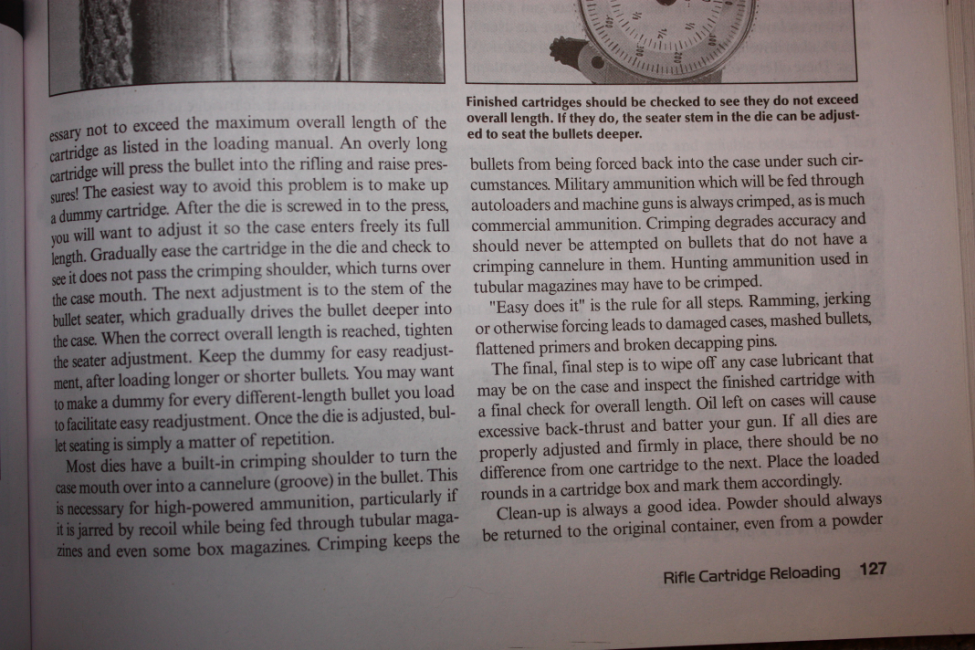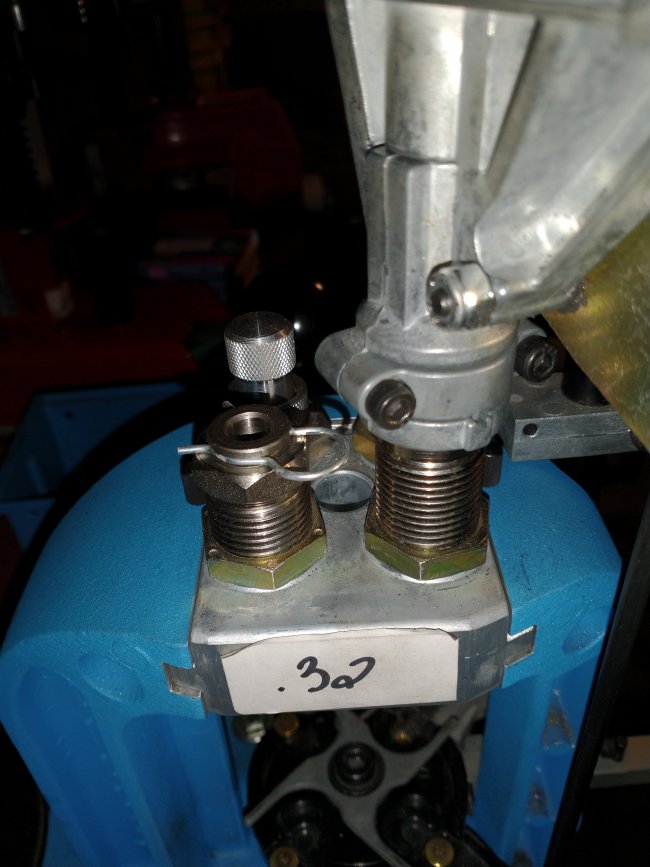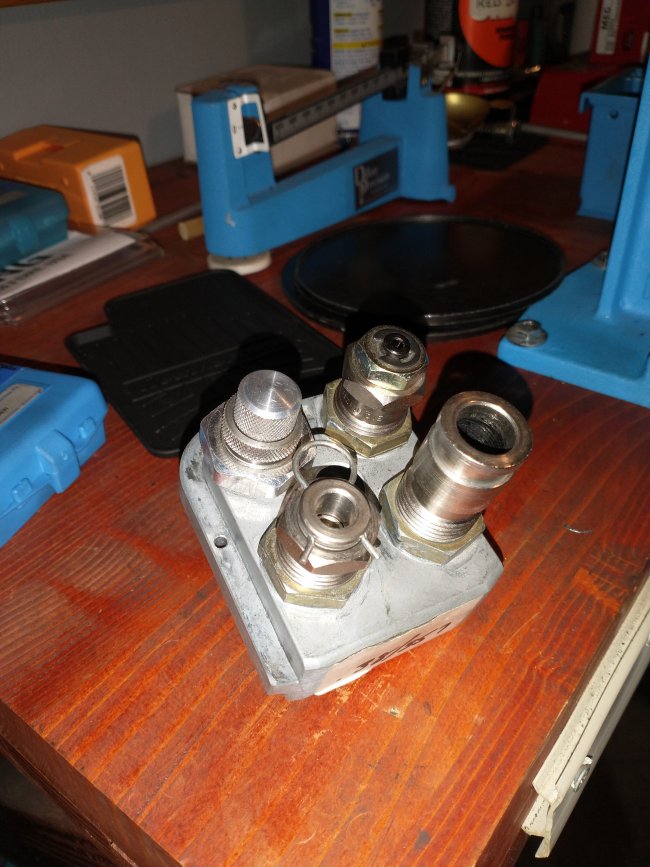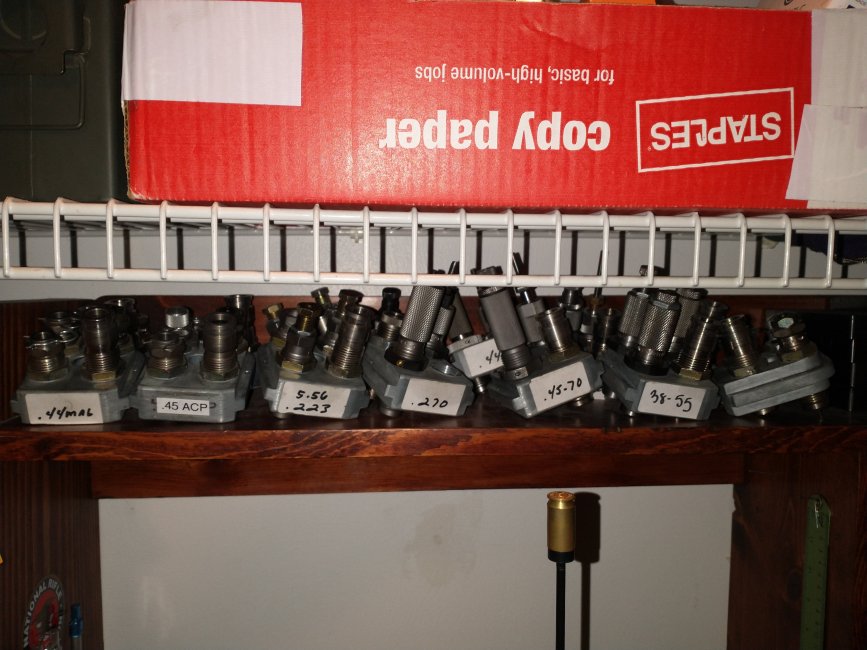All of my books mention to building and keeping a dummy round for each seating die setup (in this case 223 REM).
How does making a dummy round help save any time with die setup? None of what I read really explains what to do with the dummy round.
When prepping for a new batch of ammo, I usually setup the die to the "default" (i.e. turn the die into the press until it bottoms on the shellholder and back off x number of turns (for no crimp). Then I run the seating plug several turns out so I don't get seated too far and have a chance to dial the depth in desired value.
If I put a round in the press, it's hard to tell where (how far into the die) exactly the shell goes before it hits the seating plug or how close it is to the crimp ring. Is this something I should be able to feel manually?
How does making a dummy round help save any time with die setup? None of what I read really explains what to do with the dummy round.
When prepping for a new batch of ammo, I usually setup the die to the "default" (i.e. turn the die into the press until it bottoms on the shellholder and back off x number of turns (for no crimp). Then I run the seating plug several turns out so I don't get seated too far and have a chance to dial the depth in desired value.
If I put a round in the press, it's hard to tell where (how far into the die) exactly the shell goes before it hits the seating plug or how close it is to the crimp ring. Is this something I should be able to feel manually?








